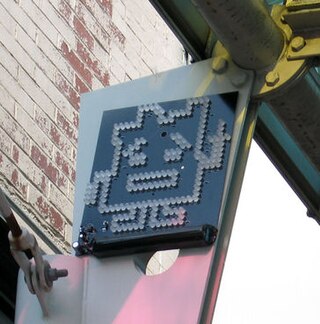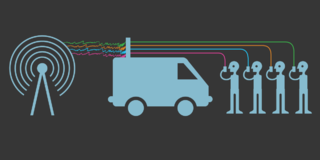In the field of computer security, independent researchers often discover flaws in software that can be abused to cause unintended behaviour; these flaws are called vulnerabilities. The process by which the analysis of these vulnerabilities is shared with third parties is the subject of much debate, and is referred to as the researcher's disclosure policy. Full disclosure is the practice of publishing analysis of software vulnerabilities as early as possible, making the data accessible to everyone without restriction. The primary purpose of widely disseminating information about vulnerabilities is so that potential victims are as knowledgeable as those who attack them.

Bruce Schneier is an American cryptographer, computer security professional, privacy specialist, and writer. Schneier is a Lecturer in Public Policy at the Harvard Kennedy School and a Fellow at the Berkman Klein Center for Internet & Society as of November, 2013. He is a board member of the Electronic Frontier Foundation, Access Now, and The Tor Project; and an advisory board member of Electronic Privacy Information Center and VerifiedVoting.org. He is the author of several books on general security topics, computer security and cryptography and is a squid enthusiast.
A cypherpunk is any individual advocating widespread use of strong cryptography and privacy-enhancing technologies as a route to social and political change. Originally communicating through the Cypherpunks electronic mailing list, informal groups aimed to achieve privacy and security through proactive use of cryptography. Cypherpunks have been engaged in an active movement since at least the late 1980s.
The Point-to-Point Tunneling Protocol (PPTP) is an obsolete method for implementing virtual private networks. PPTP has many well known security issues.

In computer networking, a wireless access point, or more generally just access point (AP), is a networking hardware device that allows other Wi-Fi devices to connect to a wired network or wireless network. As a standalone device, the AP may have a wired connection to a switch or router, but, in a wireless router, it can also be an integral component of the router itself. An AP is differentiated from a hotspot, which is a physical location where Wi-Fi access is available.

Cory Efram Doctorow is a Canadian-British blogger, journalist, and science fiction author who served as co-editor of the blog Boing Boing. He is an activist in favour of liberalising copyright laws and a proponent of the Creative Commons organization, using some of its licences for his books. Some common themes of his work include digital rights management, file sharing, and post-scarcity economics.
Electronic voting is voting that uses electronic means to either aid or take care of casting and counting ballots.
In computing, Download.ject is a malware program for Microsoft Windows servers. When installed on an insecure website running on Microsoft Internet Information Services (IIS), it appends malicious JavaScript to all pages served by the site.
End-to-end encryption (E2EE) is a private communication system in which only communicating users can participate. As such, no one, including the communication system provider, telecom providers, Internet providers or malicious actors, can access the cryptographic keys needed to converse.
Security theater is the practice of implementing security measures that are considered to provide the feeling of improved security while doing little or nothing to achieve it.
Hacktivismo is an offshoot of Cult of the Dead Cow (cDc), whose beliefs include access to information as a basic human right. It was founded in 1999.

On the morning of January 31, 2007, the Boston Police Department and the Boston Fire Department mistakenly identified battery-powered LED placards depicting the Mooninites, characters from the Adult Swim animated television series Aqua Teen Hunger Force, as improvised explosive devices (IEDs), leading to a massive panic. Placed throughout Boston, Massachusetts, and the surrounding cities of Cambridge and Somerville by Peter "Zebbler" Berdovsky and Sean Stevens, these devices were part of a nationwide guerrilla marketing advertising campaign for Aqua Teen Hunger Force Colon Movie Film for Theaters.
The Internet of things (IoT) describes devices with sensors, processing ability, software and other technologies that connect and exchange data with other devices and systems over the Internet or other communications networks. The Internet of things encompasses electronics, communication, and computer science engineering. "Internet of things" has been considered a misnomer because devices do not need to be connected to the public internet; they only need to be connected to a network and be individually addressable.
Dual_EC_DRBG is an algorithm that was presented as a cryptographically secure pseudorandom number generator (CSPRNG) using methods in elliptic curve cryptography. Despite wide public criticism, including the public identification of the possibility that the National Security Agency put a backdoor into a recommended implementation, it was for seven years one of four CSPRNGs standardized in NIST SP 800-90A as originally published circa June 2006, until it was withdrawn in 2014.

Google Nest is a line of smart home products including smart speakers, smart displays, streaming devices, thermostats, smoke detectors, routers and security systems including smart doorbells, cameras and smart locks.

Bullrun is a clandestine, highly classified program to crack encryption of online communications and data, which is run by the United States National Security Agency (NSA). The British Government Communications Headquarters (GCHQ) has a similar program codenamed Edgehill. According to the Bullrun classification guide published by The Guardian, the program uses multiple methods including computer network exploitation, interdiction, industry relationships, collaboration with other intelligence community entities, and advanced mathematical techniques.

Cellphone surveillance may involve tracking, bugging, monitoring, eavesdropping, and recording conversations and text messages on mobile phones. It also encompasses the monitoring of people's movements, which can be tracked using mobile phone signals when phones are turned on.

Attempts, unofficially dubbed the "Crypto Wars", have been made by the United States (US) and allied governments to limit the public's and foreign nations' access to cryptography strong enough to thwart decryption by national intelligence agencies, especially the National Security Agency (NSA).

Nadia Heninger is an American cryptographer, computer security expert, and computational number theorist at the University of California, San Diego.
In digital computing, hardware security bugs are hardware bugs or flaws that create vulnerabilities affecting computer central processing units (CPUs), or other devices which incorporate programmable processors or logic and have direct memory access, which allow data to be read by a rogue process when such reading is not authorized. Such vulnerabilities are considered "catastrophic" by security analysts.









